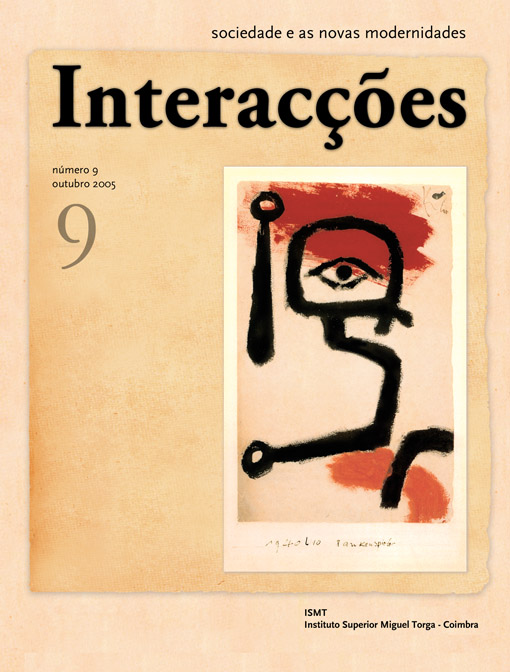Fim de Vida e Não-Abandono: Um Tríptico a Partir de Timothy E. Quill
Abstract
Ao nível formal, este artigo retira inspiração dos trípticos da arte sacra ocidental, sendo o próprio artigo constituído por um tríptico (escrito), integrando cinco painéis pintados (os painéis laterais posteriores também se encontram pintados). É sob esta forma que, a partir de alguns livros do prestigiado médico e professor norte-americano Timothy Quill, mas também a partir de Freud e outras fontes, se reflecte sobre o fim de vida e a necessidade de haver um compromisso estreito de não-abandono, da parte de quem cuida, em relação àquela/e que é objecto de cuidado, cuidado médico ou outro. O texto evidencia que honrar este compromisso de não-abandono, sobretudo de quem está num processo difícil de morte, implica a legalização ou despenalização do suicídio assistido. Além do mais, na linha de Quill, é defendido que a possibilidade legal do suicídio medicamente assistido, mediante o estabelecimento de rigorosas salvaguardas, pode contribuir, em muito, para a redução da angústia gerada pela expectativa de uma morte difícil. Como lado sombra das actuais proibições, salienta-se o risco de abandono em que se podem vir a encontrar as/os doentes em processos de morte mais difíceis.
End-of-Life and Non-Abandonment: A Triptych After Timothy E. Quill
In terms of structure, the text presented here is inspired by the western sacred art triptychs, being made up of a (written) triptych, integrating five painted panels (the two lateral back panels are also painted). It is according to this structure that, based on some books by the prestigious North-American doctor and Professor Timothy Quill, but also based on Freud and other sources, the article reflects upon end-of-life and the need for a close commitment in terms of non-abandonment between those who take care of and those who are being taken care of, subject to medical care and other kinds of care. The text will illustrate that honoring this commitment of non-abandonment implies that the clinician promises to work in partnership with the patient and family through their uncertain future no matter where it goes. Based on Quill’s work, it will argue that through the establishment of strict safeguards the legal possibility of physicianassisted suicide may contribute to decreasing the anguish brought about by the prospect of a difficult death. Most patients will not need this assistance, but many are glad to know that it could be there. One must stress that the downside of the current prohibitions is the risk of abandonment which the patients undergoing a harder dying process might face.
Downloads
Downloads
Published
How to Cite
Issue
Section
License
The copyright of published works is retained by the author who grants Interações the original publication right. The published article can be used freely for educational, non-commercial purposes, in accordance with the Creative Commons License - Attribution-Non-Commercial 4.0 International, provided that the author, the title of the article, the title and number of the journal are cited together with the URL or DOI of the article.



